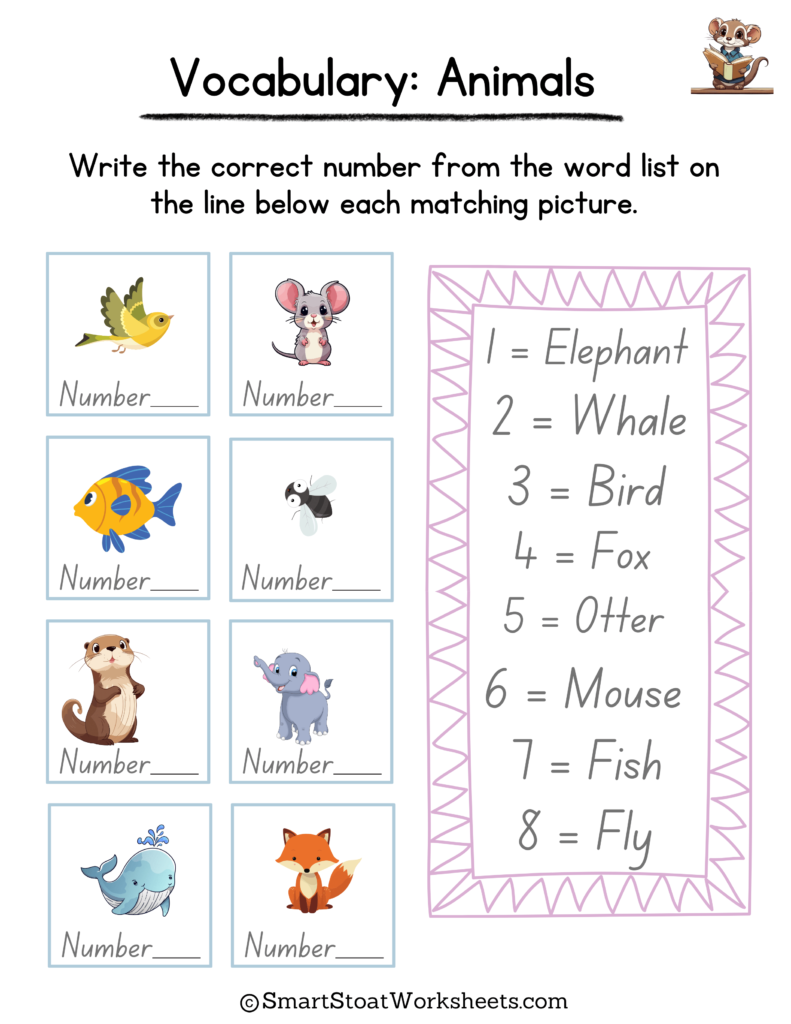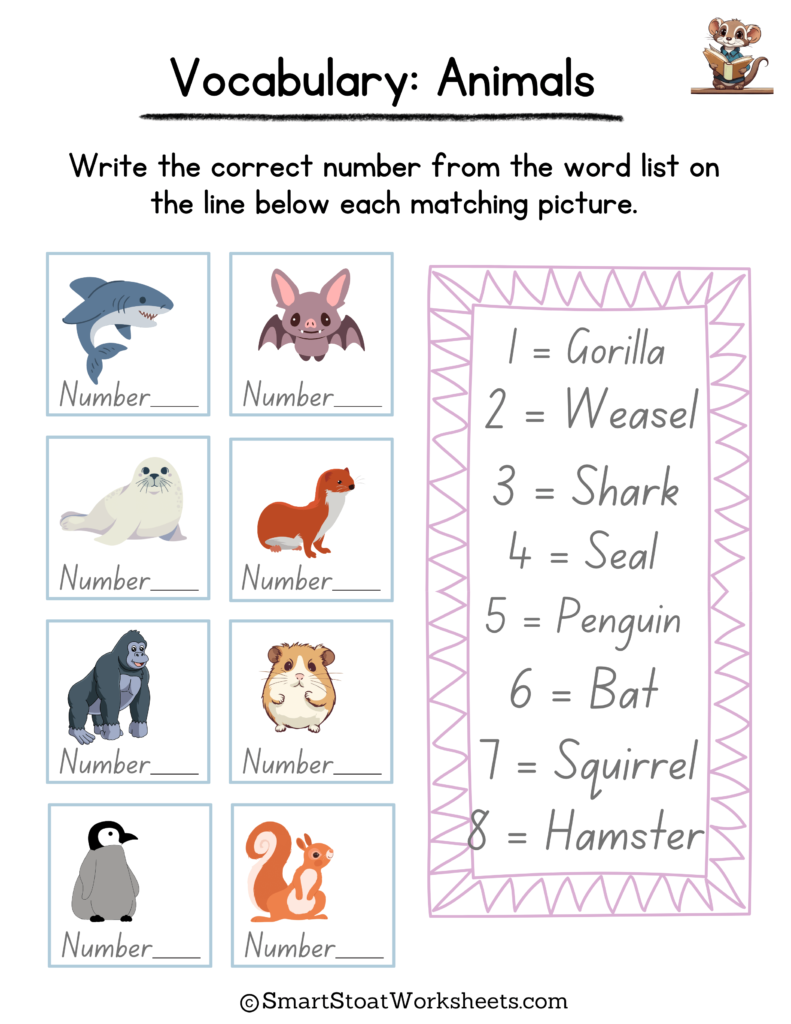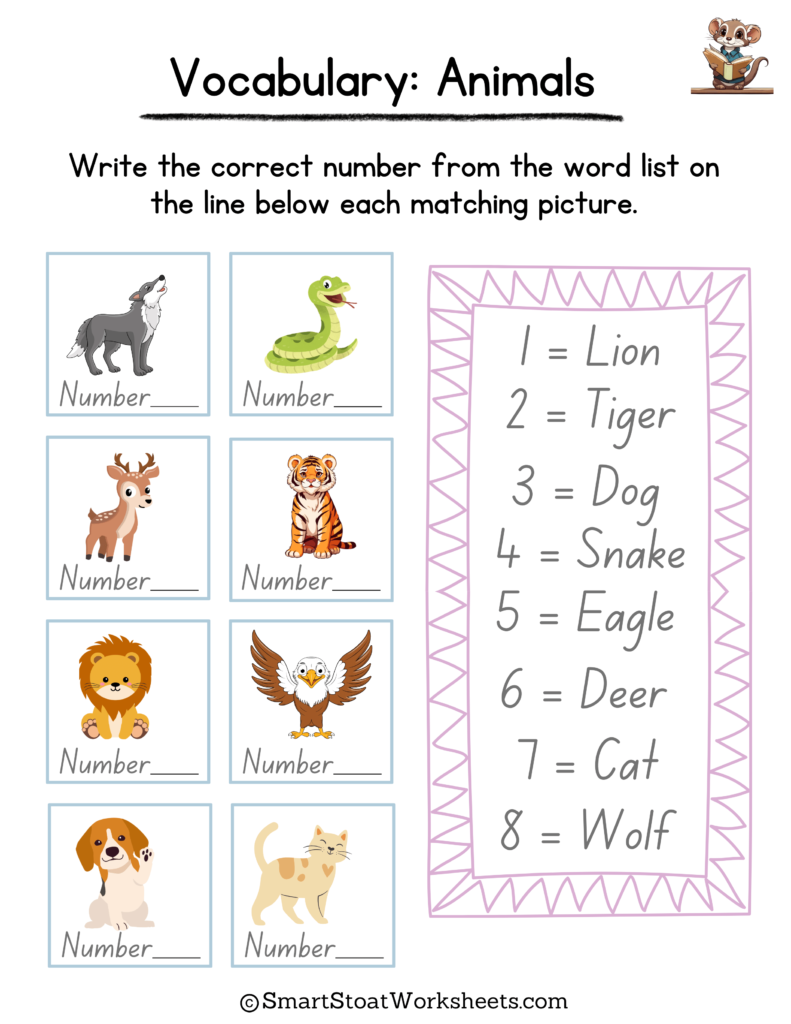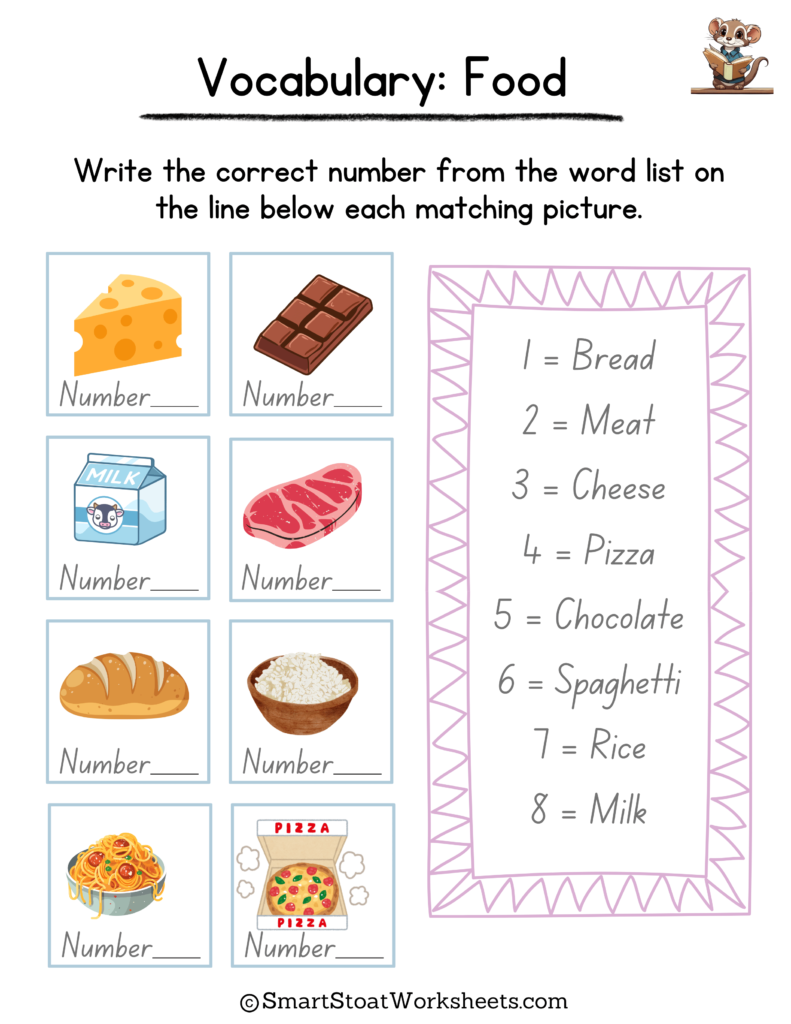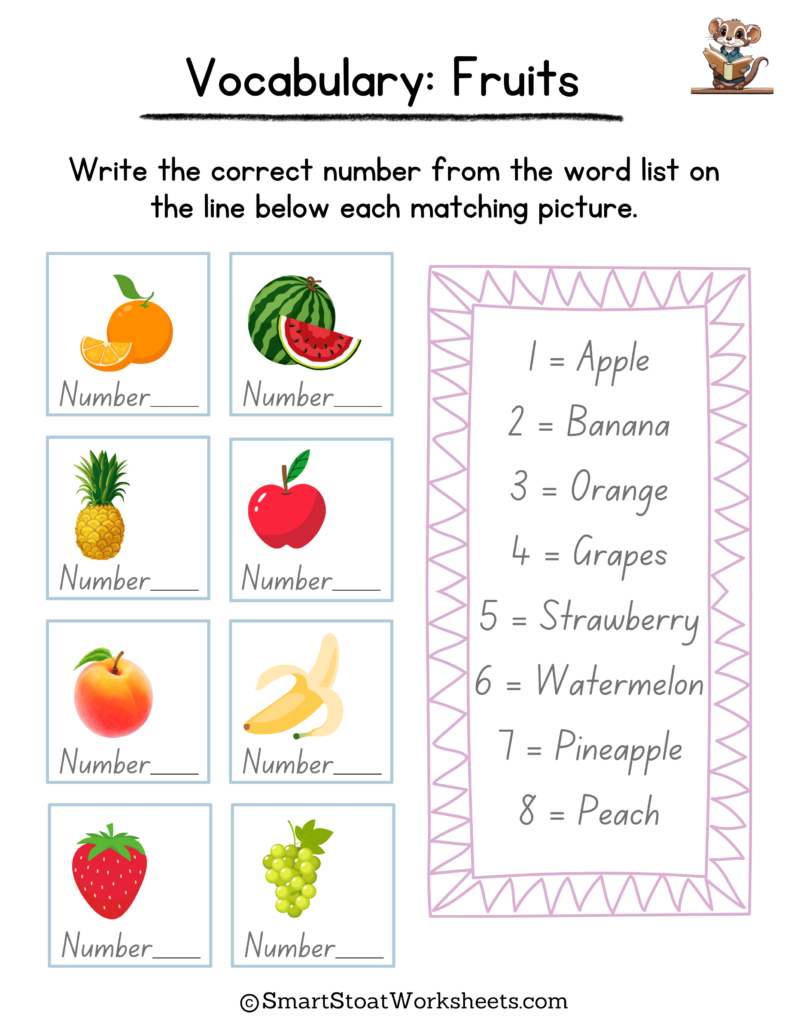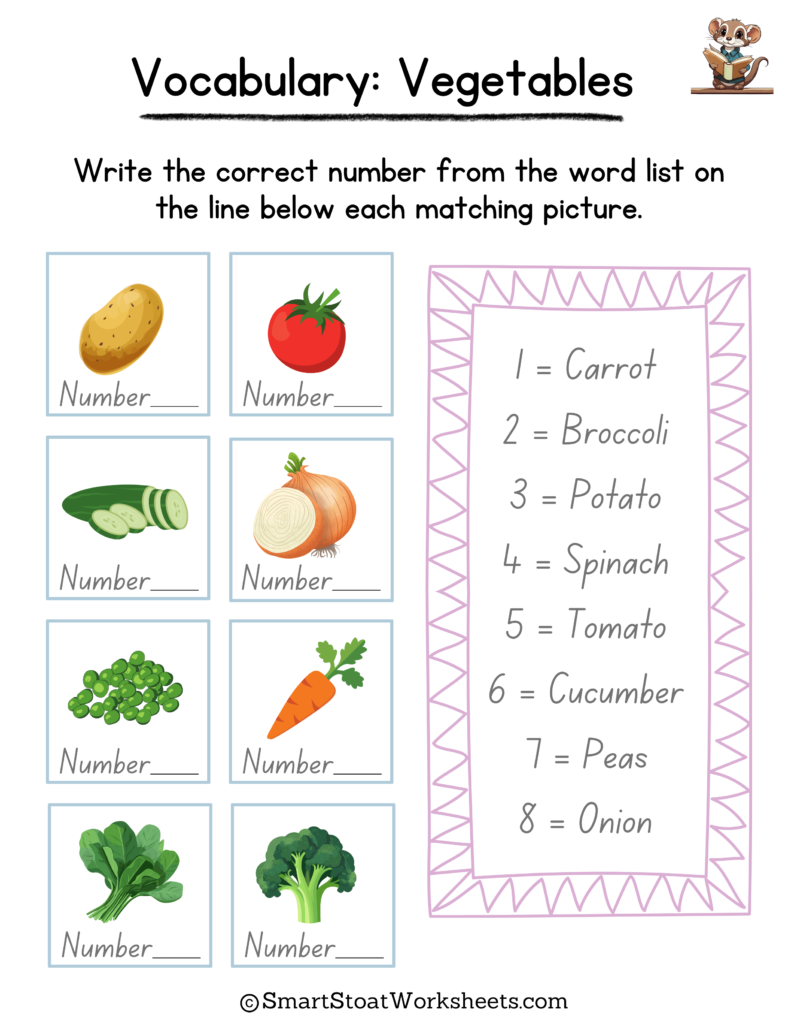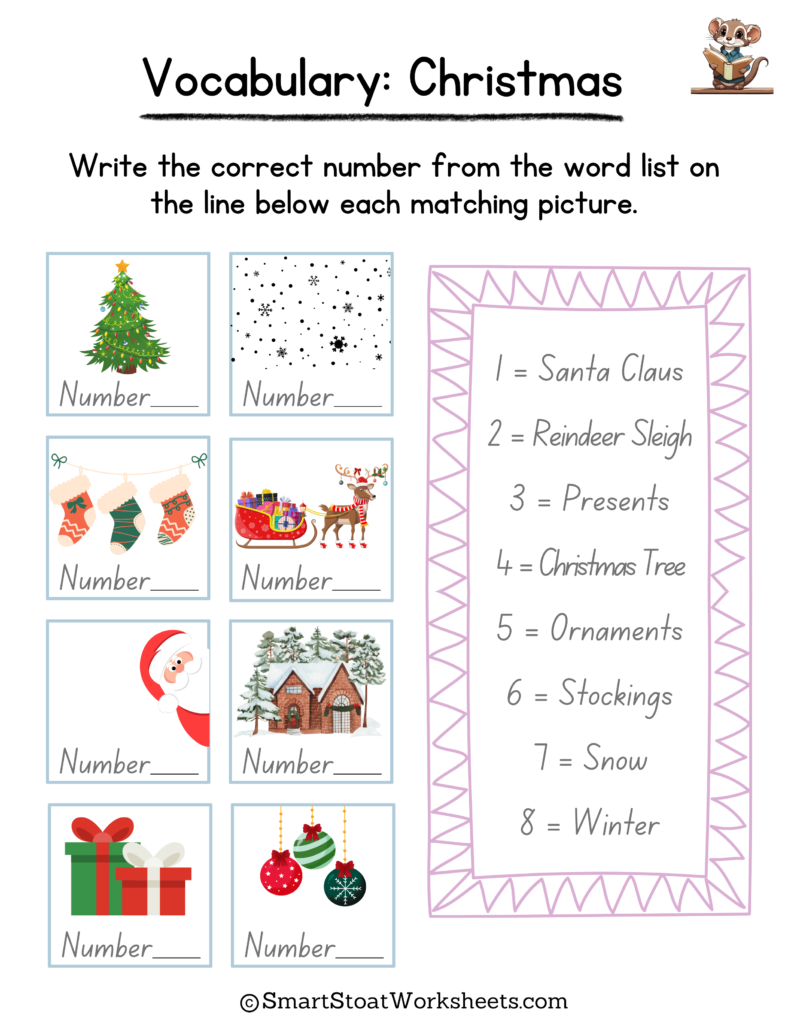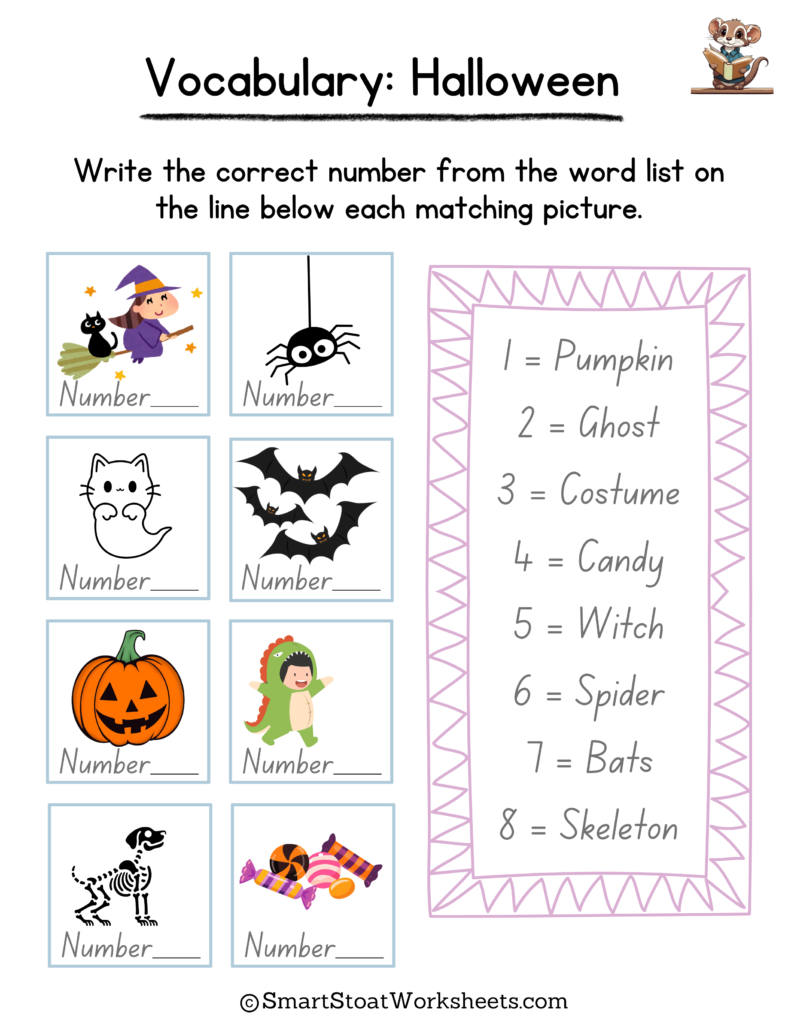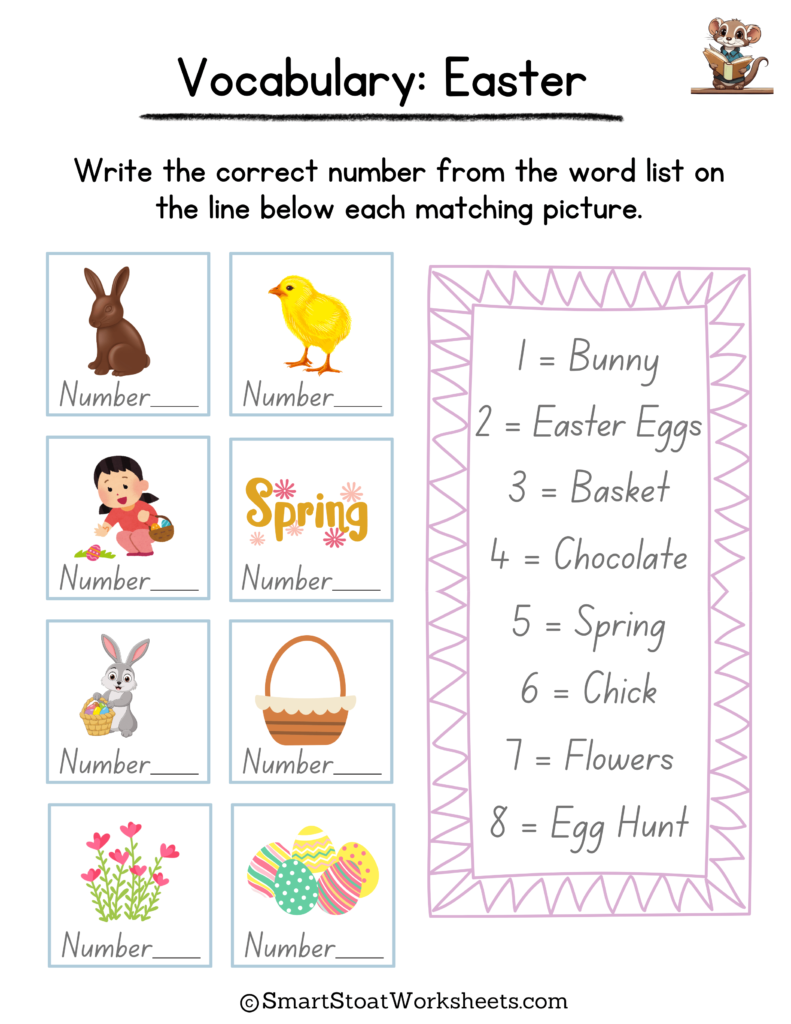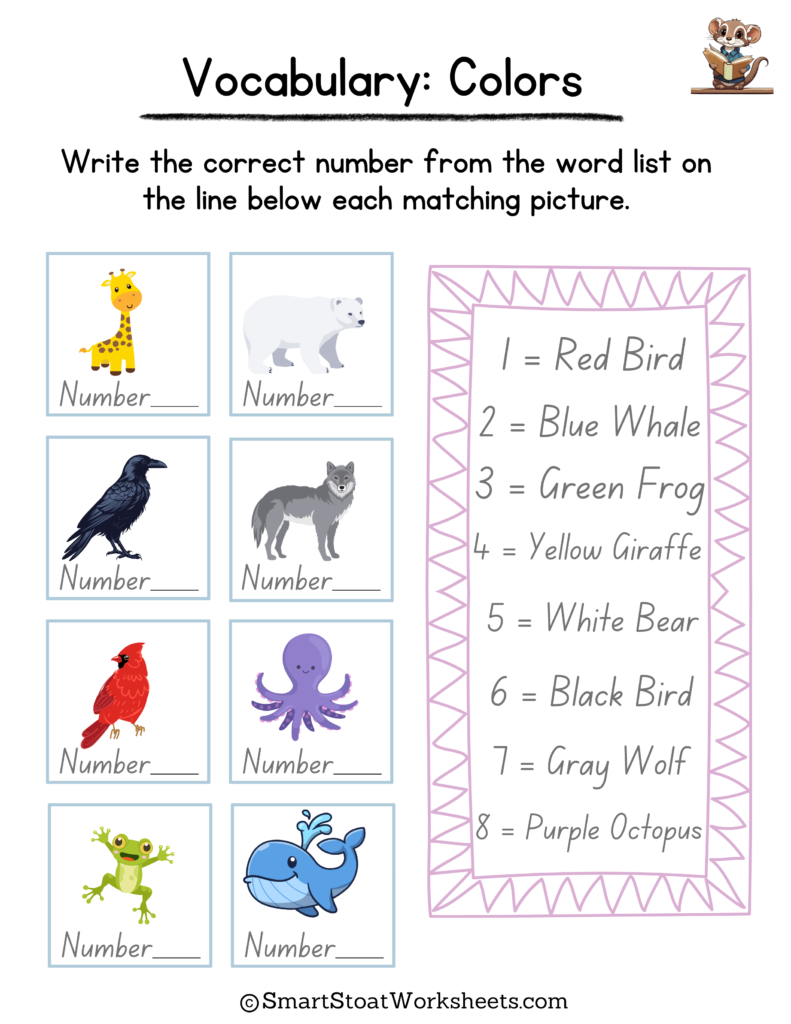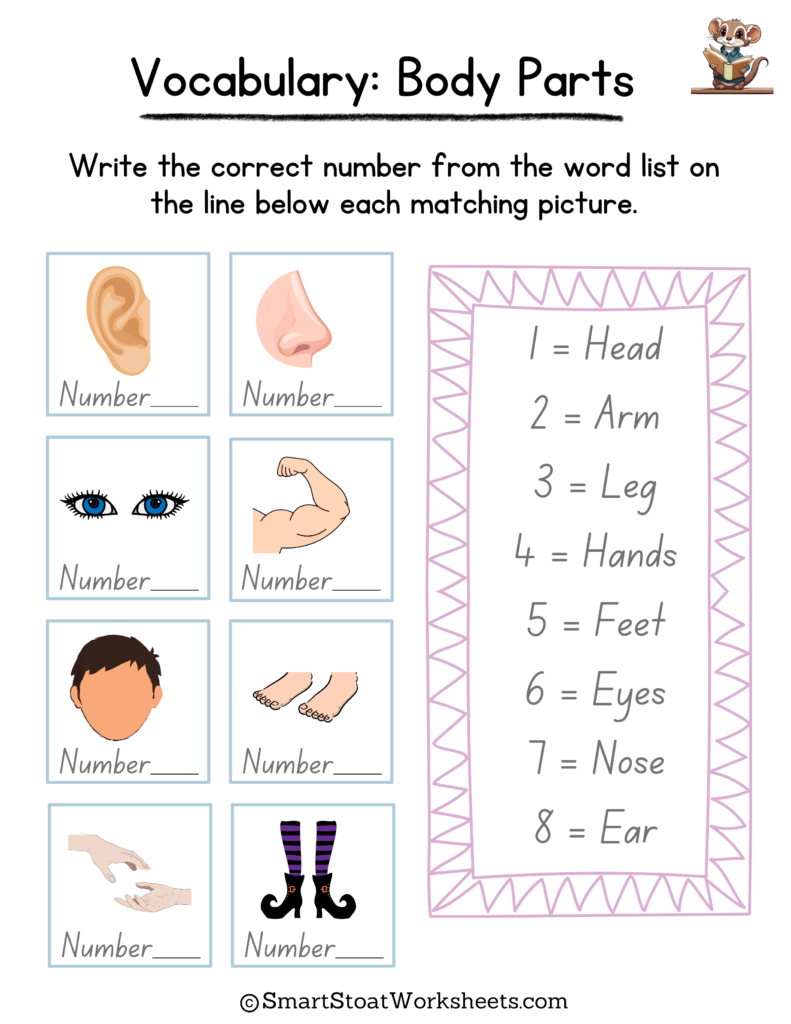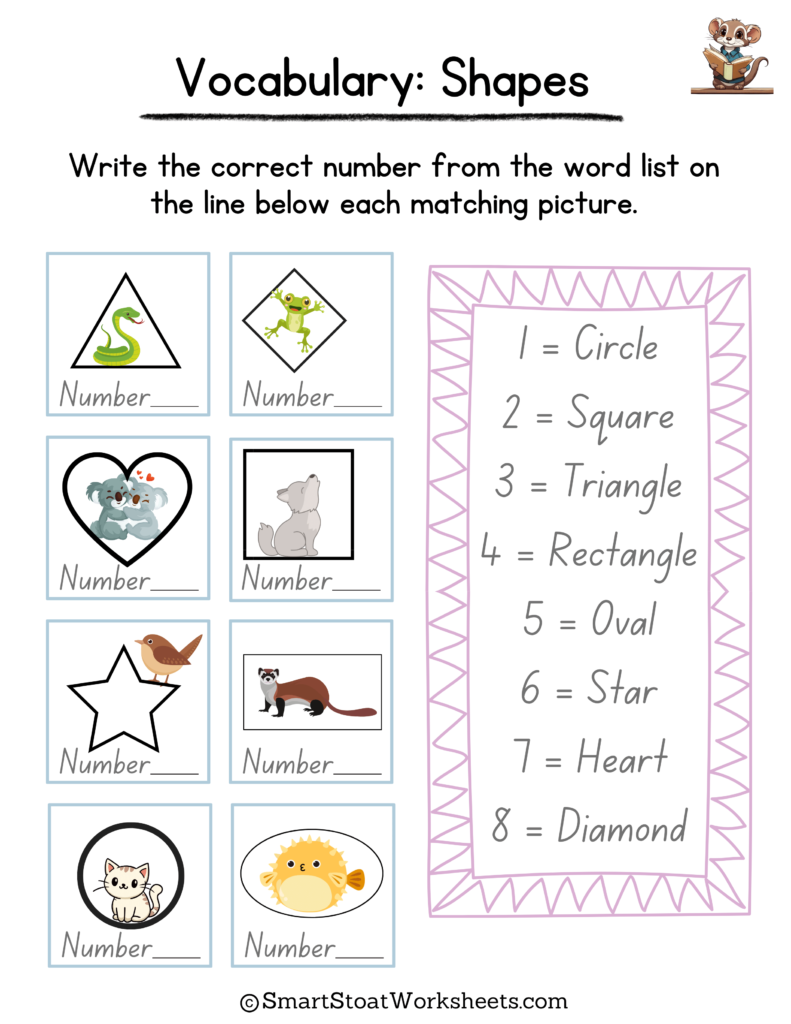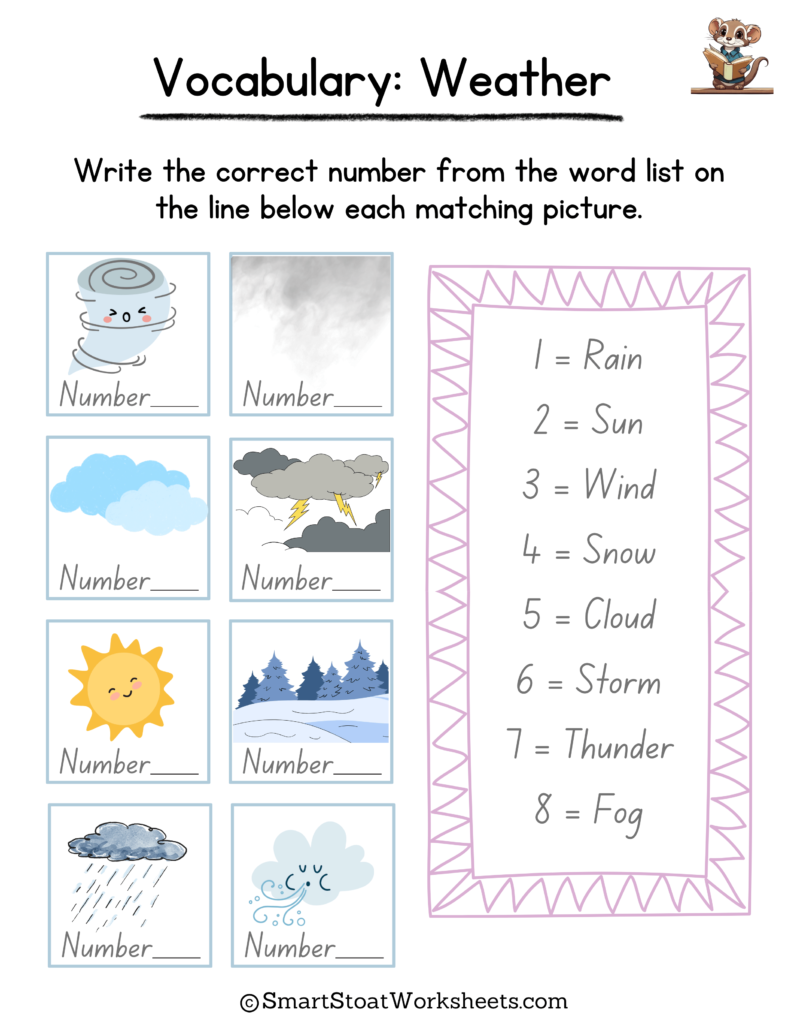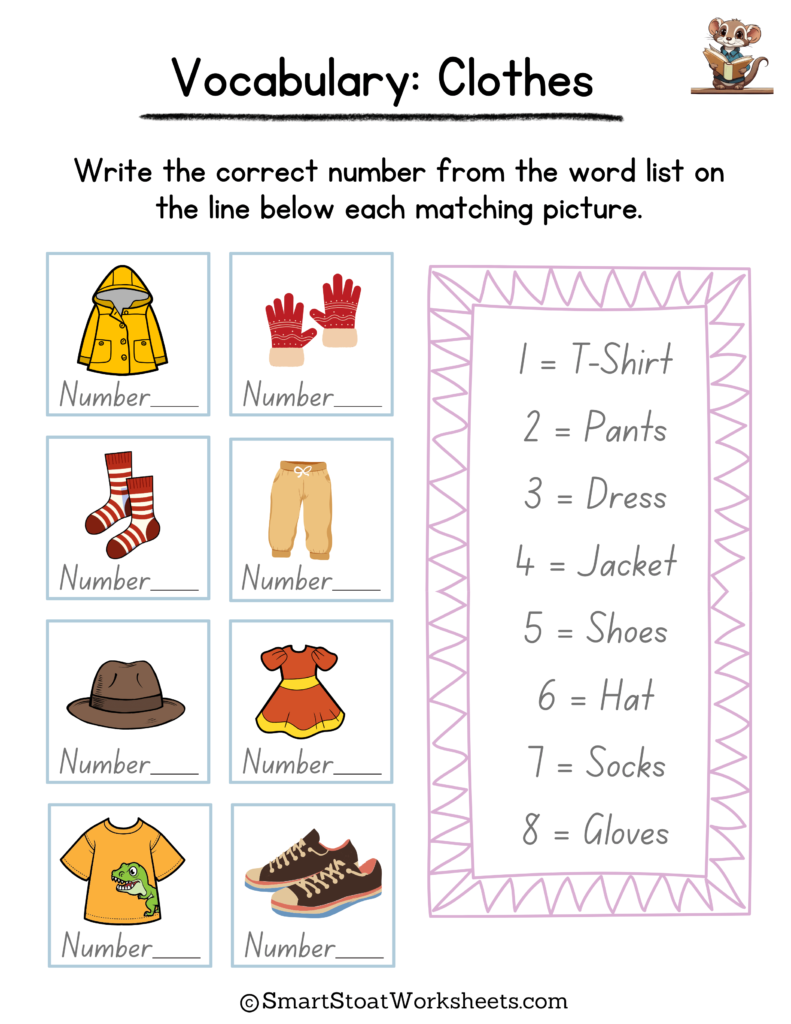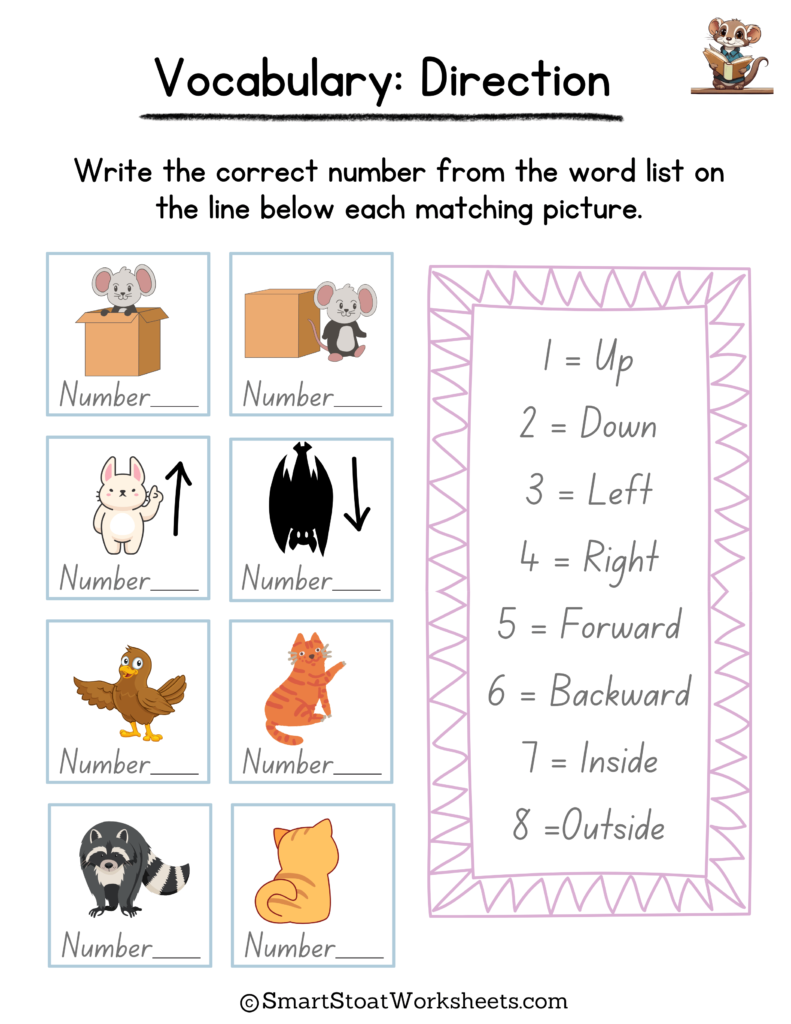Each “Practice Vocabulary Words” worksheet features 8 colorful boxes filled with adorable animal pictures, designed to make learning vocabulary both engaging and enjoyable for preschool and kindergarten kids. Your child will see a list of 8 words that correspond to these pictures. The task is simple yet effective: kids will look at each image, find the matching word from the list, and write the corresponding number on the line beneath each picture. This hands-on activity not only encourages word recognition but also helps develop their early writing skills in a fun way! Besides animals, our vocabulary worksheets feature holidays (christmas, halloween, easter), food, clothes, weather, and body parts. Click the worksheet(s) you want to start the download. No sign-up required.
Vocabulary Words for Kindergarten: Animals
Vocabulary Words for Kindergarten: Food
Vocabulary Words for Kindergarten: Holidays
More Vocabulary Worksheets
I created these worksheets specifically for parents and teachers seeking quality educational resources for young learners. Each printable PDF is easy to download—just click on the sheet you want, and it’s ready for use. The bright, cheerful animals on each worksheet add a delightful touch that keeps kids motivated and excited about learning.
Whether you’re looking to supplement your child’s education at home or need engaging material for your classroom, these worksheets provide a perfect solution. They serve as a wonderful tool to help build vocabulary while sparking joy in the learning process. So, take a moment to explore the available worksheets, download the ones that resonate with you, and watch your little ones thrive as they practice their vocabulary skills!
Learning with our “Practice Vocabulary Words” Worksheets
Using our “Practice Vocabulary Words” worksheets can be an exciting and rewarding experience for both kids and parents or teachers. Here’s a step-by-step guide on how to maximize the learning potential of these worksheets:
Step 1: Prepare the Learning Environment
Choose a Quiet Space: Set up a comfortable and distraction-free area for your child to work. Make sure there’s enough light and a flat surface for writing.
Gather Supplies: Collect some basic supplies like pencils, erasers, and colored crayons or markers. Encourage your child to use colors to make their worksheets more vibrant and fun.
Step 2: Introduce the Worksheet
Explain the Task: Start by showing your child the worksheet. Explain that they will be matching words to pictures. Point out the 8 boxes with adorable animal pictures and the corresponding list of words.
Discuss the Pictures: Take a moment to discuss each animal in the pictures. Ask your child questions like, “What sound does this animal make?” or “Where does this animal live?” This conversation builds context and engages their curiosity.
Step 3: Review the Vocabulary
Read the Word List Together: Go through the list of words together. Encourage your child to repeat each word after you. This practice helps with pronunciation and reinforces their memory of the words.
Use Visual Cues: If your child struggles with a word, refer back to the corresponding picture for context. This connection between the visual and the written word helps solidify their understanding.
Step 4: Start the Activity
Encourage Independence: Let your child attempt the worksheet independently, guiding them only when necessary. This fosters a sense of accomplishment and builds confidence.
Provide Guidance: If they seem unsure, remind them to look at the pictures closely and think about the words they learned. Encourage them to think critically about which word fits each image.
Step 5: Review and Discuss
Check Answers Together: Once your child has completed the worksheet, go over their answers together. Celebrate their successes and gently correct any mistakes, explaining why the correct answers are appropriate.
Discuss New Vocabulary: Engage in a conversation about the new words they learned. Ask them to use these words in sentences or relate them to their daily life. This deepens their understanding and encourages language development.
Step 6: Extend the Learning
Reinforce Learning: Create additional activities using the new vocabulary. For example, you could draw pictures of the animals together or create a short story using the new words.
Repeat the Worksheets: Encourage your child to revisit the worksheets over time to reinforce their learning. Repetition helps with retention, and they might discover new insights on subsequent tries.
Step 7: Celebrate Progress
Acknowledge Achievements: Celebrate your child’s progress, whether big or small! Consider making a “Vocabulary Wall” to showcase their completed worksheets and newly learned words.
Provide Encouragement: Always encourage your child to keep exploring and learning new vocabulary. Positive reinforcement goes a long way in building their confidence and love for learning.
By following this guide, you can create a meaningful learning experience that encourages your child’s growth and curiosity. Happy learning with our “Practice Vocabulary Words” worksheets!
